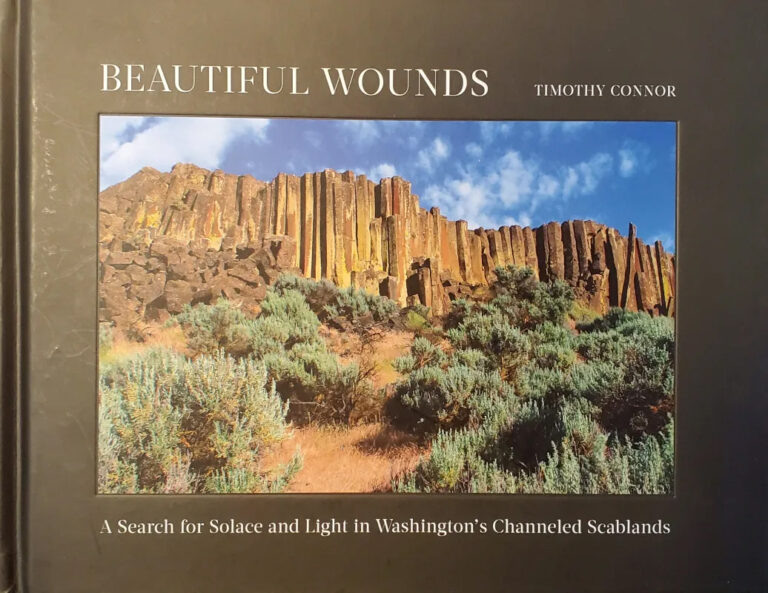Black Hole
Charles Burns
Pantheon, October 2005, 368 pages.
What are the creepiest things ever to come out of the Pacific Northwest? David Lynch’s “Twin Peaks?” The American re-make of the The Ring? The first Green River record? Slade Gorton? None can top Charles Burn’s Black Hole graphic novel-an epic tale of teen alienation set in the rain-soaked suburban woods of 1970s Western Washington.
On the surface the story reads like The River’s Edge meets Invasion of the Body Snatchers. A group of high school kids transition from weekend partying in the neighborhood woods to living there full-time, after an un-explained contagious disease slowly turns everyone into disfigured monsters. Beneath the surface, the book is part love-story, part murder mystery and part rumination on the psychology of emerging from adolescence to adulthood-or not.
Burns explores the darkest possibilities of a drug and alcohol-fueled rejection of adult responsibility. The characters struggle to connect to each other and to the world around them. And while the story is sad, and at times terrifying, it is always gripping, as Burn’s has you rooting for his two main protagonists. You want them to escape the ‘black hole’ of their lives to reach a world of hope and promise.
As good as the story is, the art of Black Hole is an even greater achievement. Burns is already one of the world’s most distinctive illustrators. You can easily spot his sharp, clean style (a style that has literally no shades of gray) from across the room. The beauty of his smooth line lulls your eye into complacency as he showers you with exquisite details and perfect lighting, and then shocks you with painful sexual encounters or frightful acts of violence. In Black Hole, Burns shows that he has mastered the use of character nuance in a long story as well as the beauty of a single splash page. It’s like a fantastic, yet grisly car wreck that you can’t take your eyes off.
Jon Snyder
When the River Ran Wild!-Indian Traditions On The Mid-Columbia and the Warm Springs Reservation
George W. Aguilar Sr.
University of Washington Press, June 2005, 252 pages.
Significant changes have taken place along the Columbia River since the time when Meriwether Lewis and William Clark traversed its flanks, encountering the people whose livelihood was taken from it so long ago in 1805. This book begins as a memoir written by George W. Aguilar Sr., who is a member of the Confederated Tribes of the Warm Springs Indian reservation, where he has lived for 70 years. Aguilar’s research and personal memory culminate in this account of the trials, tribulations and traditions of his people and their ancestors.
After briefly summarizing the region’s many tribes and their languages, Aguilar moves into the phase when the “grizzly-bearded pallidfaces” came to their lands and brought with them the malevolent gifts of foreign diseases, epidemics, alcohol and host of other virulent illnesses. Aguilar devotes separate chapters to the flora and fauna of the area, showing what types of plants and animals are native to his region and which ones they used for food and how they were prepared. He includes a half page just devoted to tribal fishing taboos.
Personal guardian spirits were a characteristic of the Indian’s religious life. Shamanism and the medicinal merits of fish aided the Indians in times of physical ailment. How these traditions were carried out receives quite a bit of explanation, which is interwoven with sometimes pious, but more often humorous stories of their application and merit. Much of the Indians’ customs were lost or significantly altered during their progressive acclimatization to contemporary American life. It seems that one of Aguilar’s main goals in writing this book is to preserve the stories, traditions, methods, customs and beliefs of his people in a tangible way, as to combat the loss of these things due to memory, lack of interest in younger generations and the passing of the older ones. In doing so, he has composed an all-encompassing depiction of the lives led by Indians of the mid-Columbia and Warm Springs reservation, which is sure to enlighten its readers.
Joel N. Young
Shattered Air: A True Account of Catastrophe and Courage on Yosemite’s Half Dome
Bob Madgic
Burford Books, June 2005, 256 pages.
Shattered Air details the stories of those involved in the tragic events that took place on the top of Half Dome during a violent thunderstorm on July 25, 1985. The book looks at several groups that were on the mountain that day, but the main focus is a group of nine hikers, and in particular their two leaders, Adrian Esteban and Tom Rice. Madgic spends quite a bit of time looking at the histories of these two friends. Occasionally this information seems a bit peripheral, but for the most part he does a wonderful job at fleshing out their personalities and tendencies.
It is hard not to compare this book with John Krakauer’s, Into The Wild; it is the story of real, and therefore imperfect, people whose proclivity for risk and thrill seeking seems to make them prime candidates for the kind of unfortunate scenarios that unfold in this book. The tragedy at the core of this story was not a case of naive people in over their heads. The leaders of this trip had years of experience in the outdoors and they took great pride in their physical prowess and their abilities to confront fear.
Shattered Air is a no-holds-barred look at what happens when human bravado meets up with the sheer power and violence possible in nature. Storms like the one on July 25 are common in Yosemite and lightning strikes on Half Dome are the rule, not the exception. The decision to be on top of Half Dome during this storm would leave two hikers dead and forever change the lives of those who survived. Luckily for the seven survivors, there were other people on the mountain that day. Without their help, and that of the rangers and medi-flight crews, more people certainly would have died. The book concludes by following up with the survivors, illuminating how this event will continue to form and affect them for the rest of their lives.
Bill Bloom












